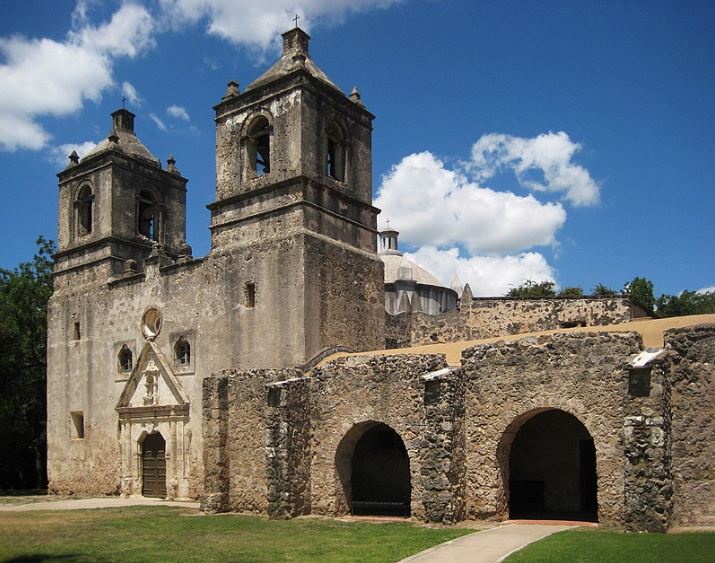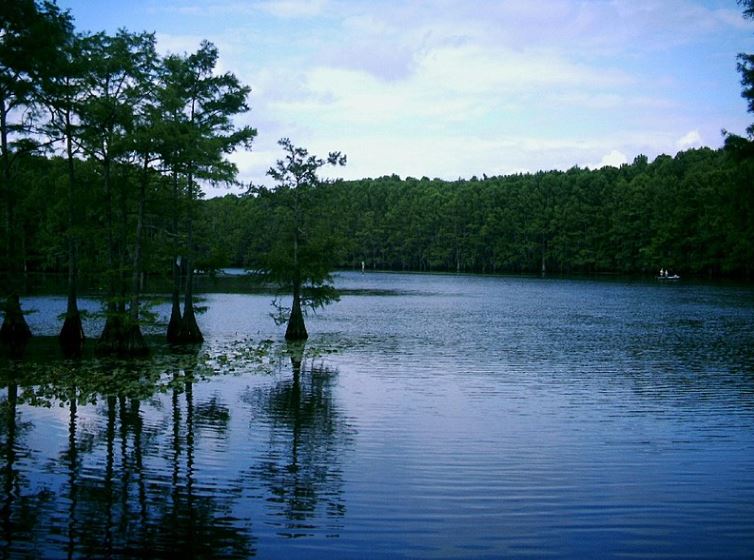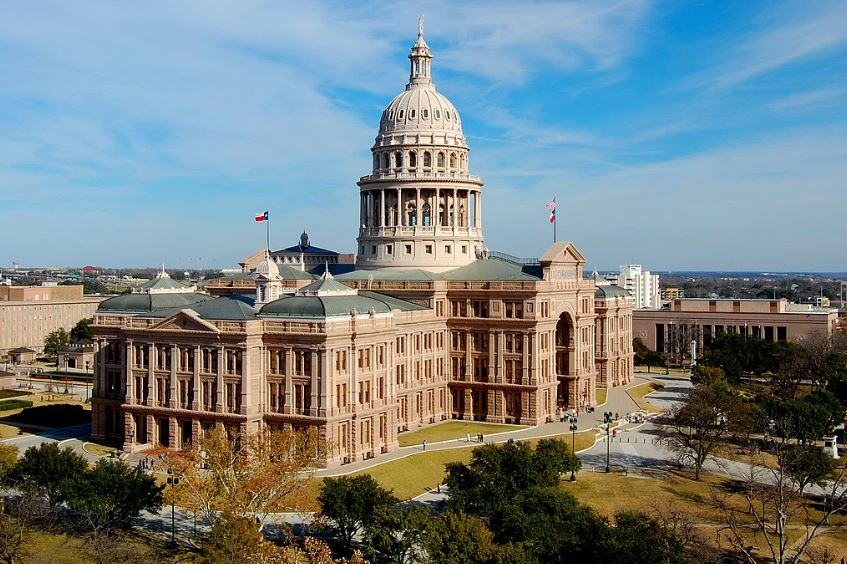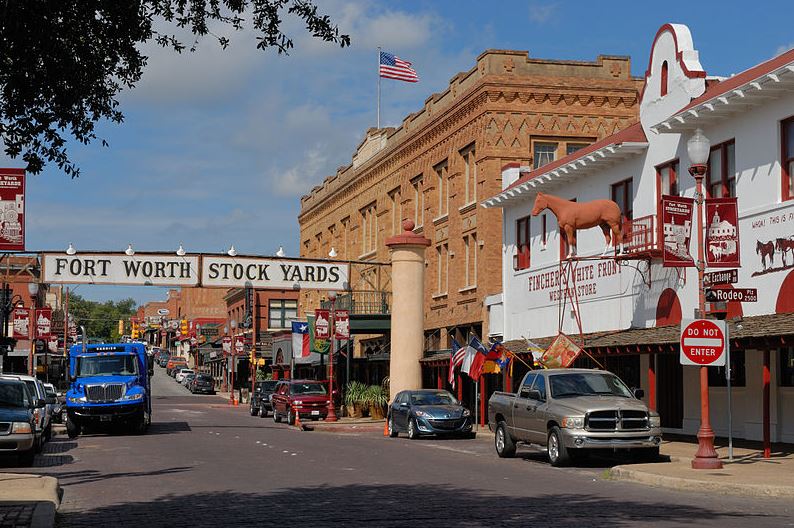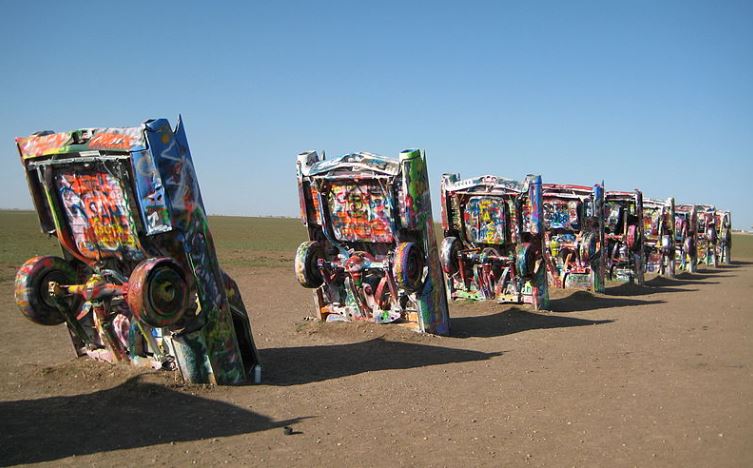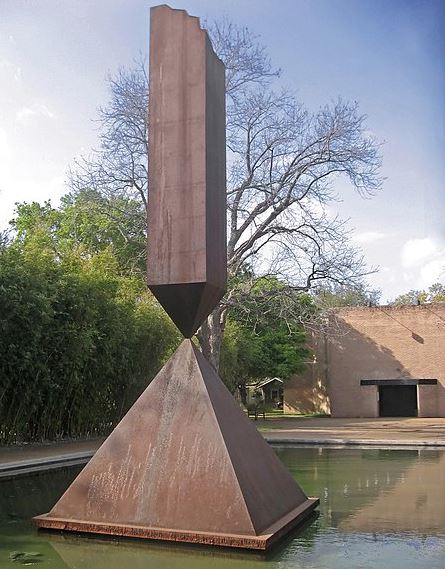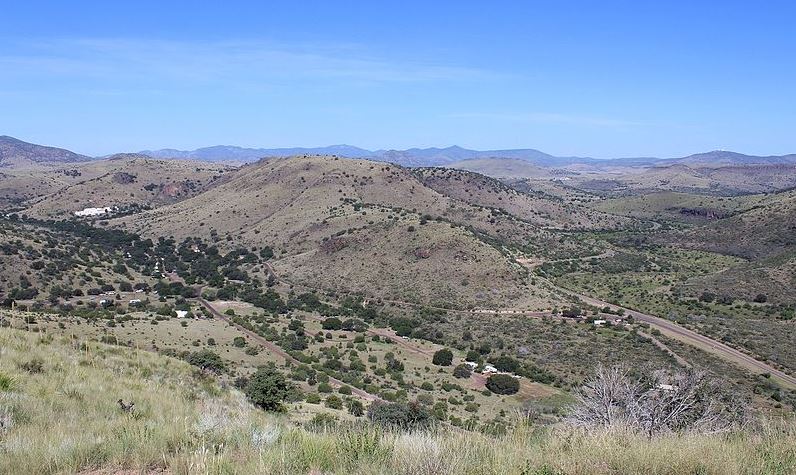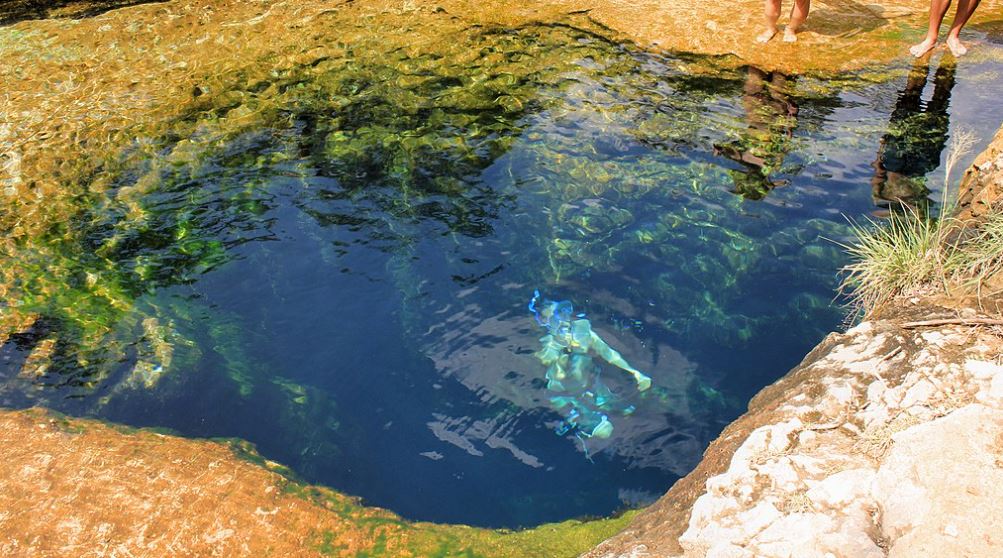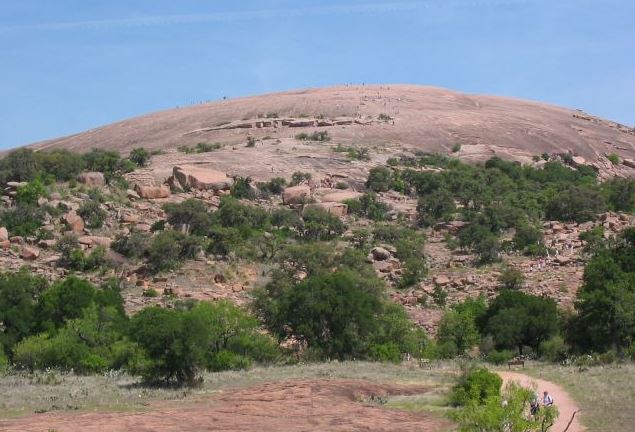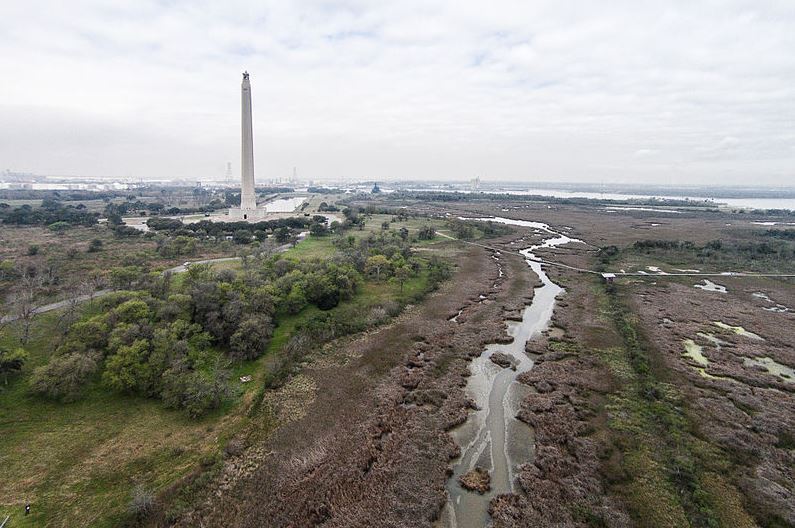Texas is the second-largest state in the United States, with an area of 268,820 sq mi (696,240 sq km), larger than any European nation. The Lone Star State is filled with so many breathtaking natural wonders and man-made marvels that it would be difficult to appreciate them in a single lifetime fully. So we’ve narrowed it down to the 25 most famous landmarks in Texas that you must see during your visit.
Congress Avenue Bridge
The Ann W. Richards Congress Avenue Bridge crosses Lady Bird Lake in Austin and is named after Texas’ 45th Governor. This bridge, however, is home to the globe’s largest urban bat colony.
From March to October, visitors flock to the historic district just before sunset to see over a million bats emerge for their nightly bug feast. Also, check out these 25 of the best things to do in Austin while you’re in the city.
San Antonio Missions National Historical Park
This National Historical Park is home to four stunning Spanish colonial missions: Concepción, San Juan, San José, and Espada. Surrounded by fortified walls, the missions are home to historic churches and structures from the early 1700s, when missionaries had them as a palace to turn local Native Americans into Catholics. The park was ordained a UNESCO World Heritage Site in 2015, so you know it’s legit.
Caddo Lake
Caddo Lake is a Louisiana and Texas border landmark, a maze of ponds and bayous.
The area is densely forested with cypress trees that have become overgrown with Spanish moss. The lake was formed by a logjam and ranges in depth from 8 to 10 feet (2.44m to 3.05m) depending on rainfall. The bayous are about 20 feet (6.1 meters) deep and lead away from the lake.
The lake contains over 70 different fish species, making its waters popular among fishermen. Caddo’s 50 miles (80 kilometers) of waterways make it a must-see destination for kayaking or canoeing in an area of breathtaking natural beauty.
Big Bend National Park
Big Bend National Park is not among the largest in the US, but the map does not represent the territory. The distance between the horizons will make visitors feel small and humble in this park.
People come here for the desert wildlife, scenery, and diverse cacti, and the Rio Grande forms a serpentine border between Texas and Mexico.
Caverns of Sonora
The Sonora Caverns are among the gorgeous show caves on the planet. Since the 1960s, the caverns have been open to the public for exploration.
The Caverns of Sonora were initially explored in the 1920s after a dog of the Mayfield family hunted down a raccoon into a hole. The caves are accessible via guided tours, with knowledgeable guides walking you through the caves and explaining the history and work done by Burch to preserve them.
Texas State Capitol
You aren’t a true Texan unless you salute the Lone Star State Capitol Building. The 308-foot-tall structure, built-in 1888 in Downtown Austin, towers over even the United States Capitol in Washington, DC, proving that everything is bigger in Texas.
There are 392 rooms, 18 vaults, 924 windows, and 404 doors throughout the historically and aesthetically significant architectural wonder. But, more importantly, there’s a dome that serves as an echo chamber where you can render your 12-year-old self proud by uttering a string of dirty words.
Blue Hole Regional Park
Blue Hole Regional Park, located on the outskirts of Austin, is a Texas landmark that travelers should not miss. On a hot summer day, the most popular activity in the park is splashing around along the cypress-lined swimming hole.
There are picnic areas, grassy lawns, and sand volleyball courts when you’re not swaying into the stream from a rope swing or soaking.
Gorman Falls
Gorman Falls is located in Colorado Bend State Park and can be reached by hiking three miles over rocky paths (five kilometers). Gorman Falls is a 70-foot (21.34-meter) high waterfall fed by a spring.
Gorman Falls, unlike many waterfalls, is wide but broken up by trees and rocks, giving the impression that numerous falls are flowing over the rock face. There are many viewing decks at various heights to provide visitors with the best view of this amazing natural landmark.
Fort Worth Stockyards
For a good reason, Fort Worth is known as “where the West Begins” and “Cowtown.” Take a walk through the famous stockyards, an 1866 livestock market, and understand why. While you’re out walking, bring an open container with you because it’s legal, and it’d be a sin not to, right?
Caddo Mounds State Historic Site
This historical park commemorates an ancient Hasinai Indian village and ceremonial center. They were part of the larger Caddo Indian group known for erecting mounds on which temples, tombs, and important people’s homes were built.
A self-guided interpretive trail lasting about an hour and a half allows visitors to learn more about the Caddo Indians.
Palo Duro Canyon
Palo Duro Canyon is the 2nd-biggest canyon in the United States and a must-see attraction in Texas. The 800ft (243m) deep canyon was created over millions of years by water erosion and spans over 30,000 acres. Viewing platforms within the canyon provide the most spectacular views of the gorge and bordering state park.
Palo Duro offers various camping, glamming, and cabin retreats to encourage guests to stay longer and make the most out of this beautiful region. While visiting the canyon’s dry and rocky landscape, look for horned lizards, mule deer, and bobcats.
Cadillac Ranch
Many crops grow in Texas soil, but one of the most surprising is near Amarillo on historic Route 66. Ten vintage Cadillacs have been half-buried here since 1974, their noses planted in the dirt and tail fins busting up like an odd, metallic harvest.
Cadillac Ranch is a roadside museum, and the graffitied husks of Americana are Texan famous monuments.
Natural Bridge Caverns
You’ve got to hand it to the four college kids who discovered this two-mile-long cavern beneath a limestone bridge in 1960, especially since all you accomplished in university was learning how to hack Funyuns and ramen into a poor guy’s French onion soup. Visit the natural relic to pay your respects. The 180ft below-ground passage and surrounding caves, formed by an underground river that disintegrated the limestone, are open for exploration via guided hikes.
Medina River
The Medina River is situated in South Central Texas’ Medina Valley. The river flows for more than 120 miles and originates on the Edwards Plateau (193 km).
The river, lined with cedar trees, oak trees, and limestone cliffs, was named after Pedro de Medina, a Spanish cartographer, in 1689. Tubers and kayakers who want to explore the river’s lazy currents and rushing rapids flock to it.
Along the river are two minor waterfalls that add to the scenery: Chamblee Falls, a 10ft (3m) fall, and a 4ft-sized (1.22m) baby waterfall. Numerous businesses in the river’s vicinity rent out kayaks and tubes.
Rothko Chapel
When approximately 80,000 people from all over the world visit a Houston landmark each year, you know something’s up. Perhaps it’s because this zen chapel is widely regarded as one of the most sacred places on the planet, earning a spot on National Geographic’s 500 of the World’s Most Powerful and Peaceful Destinations. Feel the power in the bare-bones, contemplative space.
Colorado Bend State Park
Did you know there are multiple Colorado Rivers in the United States? While they say that everything is larger in Texas, you can find the lesser-known and smaller ones here. Nonetheless, Colorado Bend State Park is a hidden gem of Texas, with lush swimming holes, 35 miles of biking and hiking trails, and the seventy-foot Gorman Falls.
Devil’s Waterhole
Devil’s waterhole is an extension of Inks Lake State Park and is nestled within it.
There are numerous conflicting stories about how Devil’s Waterhole came to be known. Some attribute it to a local landowner who would curse loudly when his wagon became stuck along the trail. Others favor the Native American legend that the warm waters of the waterhole were heated from the underworld.
This natural swimming hole is only accessible after hiking a quarter-mile (0.4km) trail. Divers and canoeists frequent the waterhole.
Davis Mountains State Park
This mountain state park in West Texas is among Texas’ most spectacular natural landmarks. The region’s landscape is the product of ancient volcanic eruptions that created the distinct mountains seen today.
Visitors can enjoy observing the park’s colorful birdlife through “the best little bird blind in Texas,” in addition to biking, hiking, and horseback riding through the park’s trails.
Eiffel Tower With Big Cowboy Hat
Leave it to this insurgent state to adorn a monumental international landmark with a massive red cowboy hat. This 65 ft tall cheeky homage to the Eiffel Tower, located in Paris, Texas, was built in 1993 by an iron worker’s union. Paris, Tennessee, built a 60-foot replica the same year, which was fine with us until they introduced another 10 feet on top.
Not to be outdone, Texans slapped a big ol’ cowboy hat on top of the fictitious architecture and claimed to be home to the “Second Largest Paris in the World.” That is until Las Vegas built a 540-foot-tall one in 1999. At the very least, theirs does not have a sick hat.
Mission Control
NASA’s Mission Control Center at the Houston Lyndon B. Johnson Space Center is responsible for ensuring that whatever insane space stuff we’re doing runs smoothly in collaboration with the Launch Control Center at NASA’s Kennedy Space Center in Florida. Sign up for a tour to see the historic mission control room, where Skylab, Gemini, Apollo-Soyuz, Apollo, and Space Shuttle events took place.
Jacob’s Well
Jacob’s well is regarded as one of the world’s most dangerous diving locations. The well’s waters are warm all year, averaging 20 degrees Celsius, attracting many visitors. The well is a spring that extends more than a mile underground before opening up into an intricate cave system.
Jacob’s well is millions of years old and was revered by Native Americans for centuries. The spring water is crystal clear, contributing to its allure for divers willing to brave a risky dive that has claimed the lives of many skilled divers.
Dealey Plaza
Dealey Plaza has a long history, but it is best known as the site of Lee Harvey Oswald’s assassination of the late President John F. Kennedy in 1963. (or whatever competing theory you may subscribe to).
Visitors can spend time within the Sixth Floor Museum at Dealey Plaza, housed in the defunct Texas School Book Depository building where Oswald took his shot.
Enchanted Rock
The natural Texas landmark Enchanted Rock is best viewed at sunset.
Enchanted Rock is among the largest rock formations in the US; the domed shale rock towers 425 feet (129 meters) above Hill County and offers stunning sunset views.
Many Native American legends are linked to the strange sounds the Rock makes as its surface temperatures drop from scorching hot to chilly cold as the sunsets. There are also reports of ghost blazes on the Rock at night.
The Huecos
The 860-acre Hueco Tanks State Park, located just over 30 miles north of El Paso, was named after the “huecos” – or huge natural rock basins – surrounding it. According to legend, the location was a spiritual sanctuary for ancient Native Americans who relied on the basin’s pooled water to stay alive in the arid land. Their 1,000-year-old pictographs can now be found all over the massive boulders.
Remember only to look but not touch.
San Jacinto Battleground State Historic Site
The remarkable 567-foot San Jacinto Monument and San Jacinto Battleground State Historic Site are important Texas landmarks. They commemorate the site of General Sam Houston’s decisive victory over Mexican General Santa Anna, which secured Texas’ independence from 1836 to 1846.
To put it simply, Texas is enormous. It is slightly larger than the entire country of France, and fifteen American states could fit inside of it. You should chart a course through Texas’ famous landmarks to navigate this space. These twenty-five locations are rich in history and natural beauty, making any of them a good starting point for those ready to hit the road.

